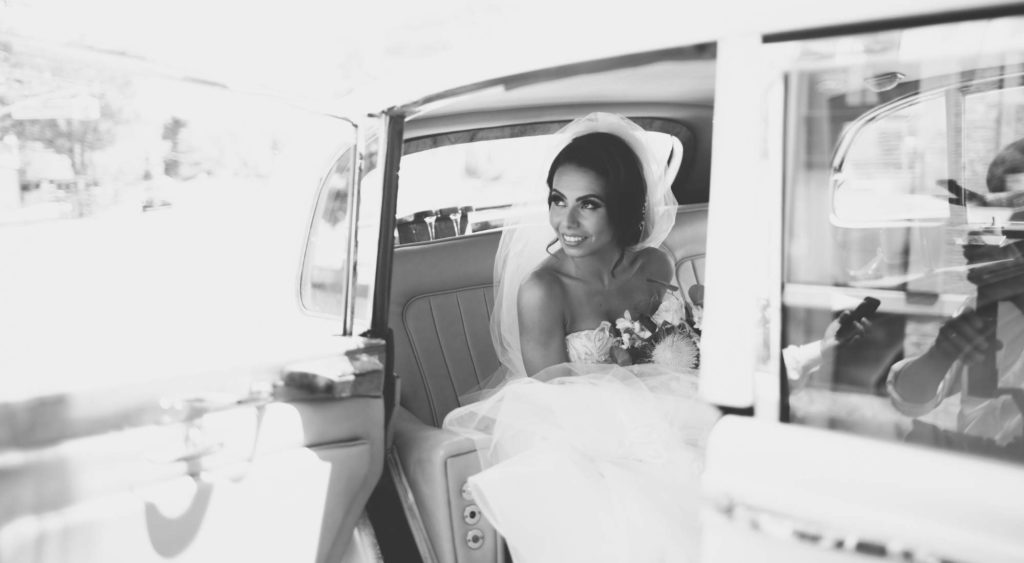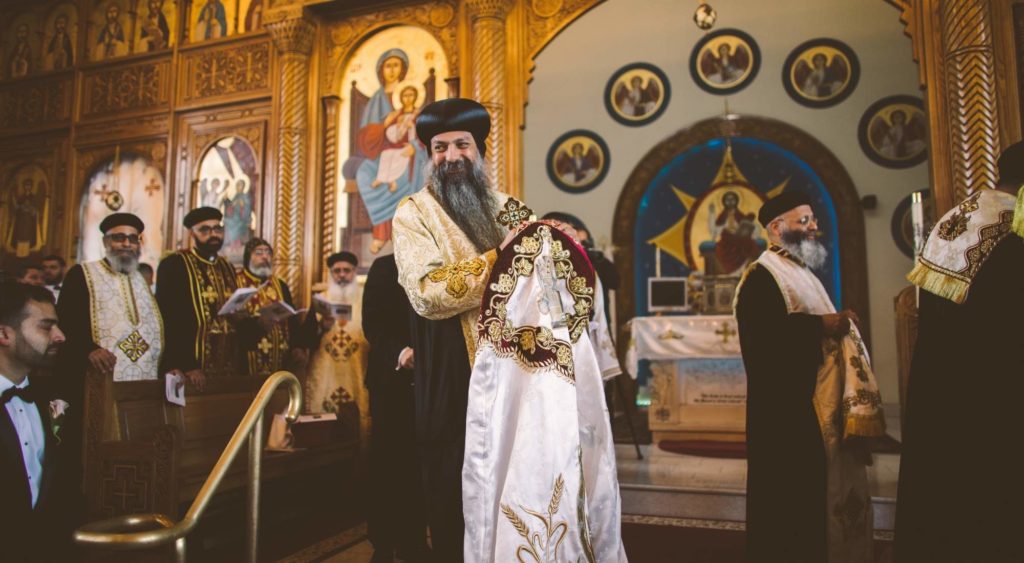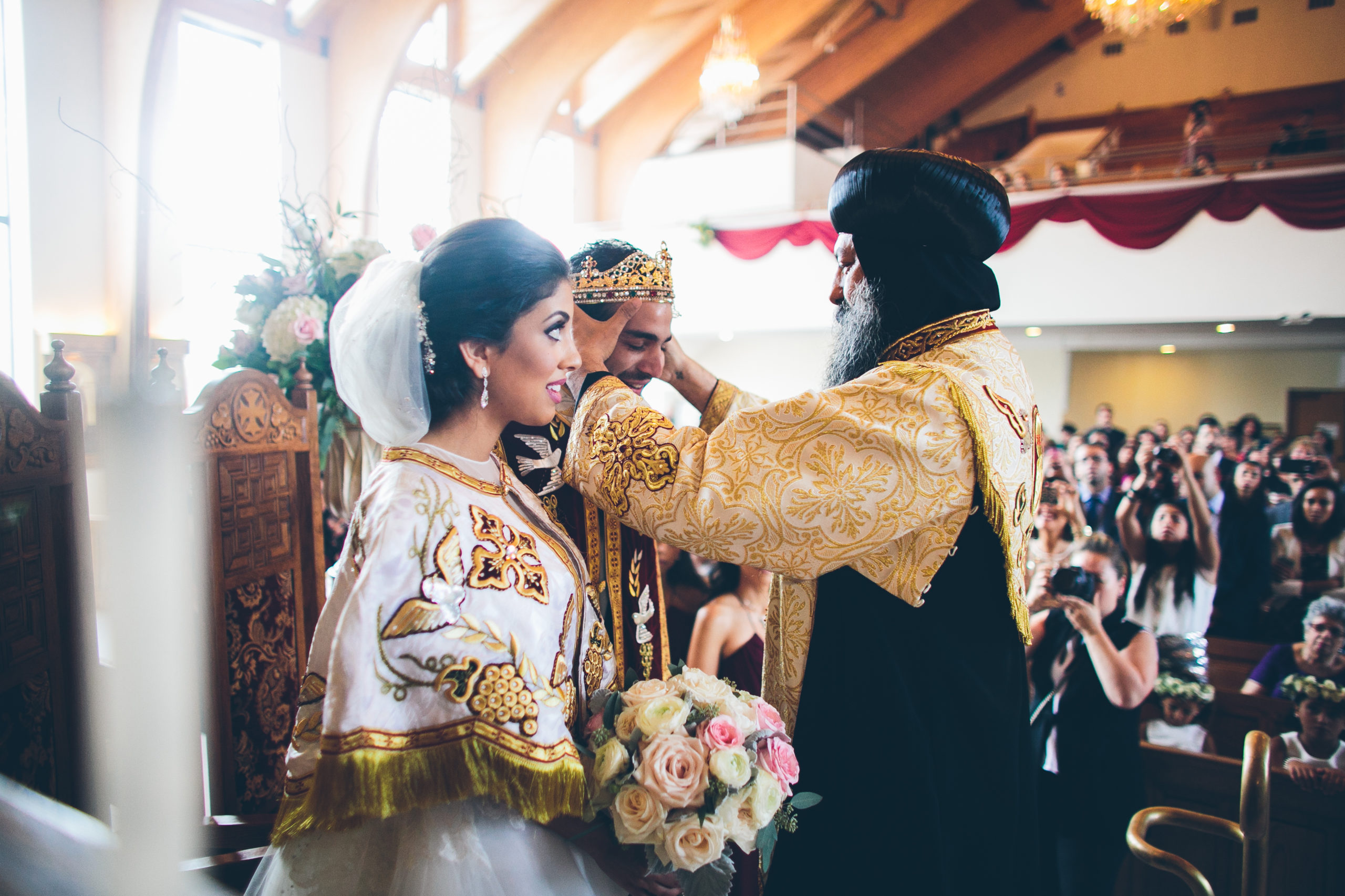From the time of the pyramids to the modern-day, Coptic Orthodox Egyptian wedding traditions have remained very much the same. Even with modern Egyptian weddings!
- Je Peniot
- Mahr and Shabka
- Yekteb Ketaboh
- Laylat Al-hinna; and
- Katb el Ketab or Ceremony
Whether you have questions about planning your own Egyptian-themed wedding or have the honor of being a guest, you’ve come to the right place.
Here we take a close-up look at the many traditions and customs that are integral to Egyptian culture and that define an Egyptian wedding.

15 Essential Egyptian Wedding Traditions
6 Egyptian Wedding Traditions That Take Place Before the Wedding
#1: Je Peniot
The traditional Egyptian wedding is usually an arranged marriage that is based on the financial status of both families. However, in the West, Egyptian couples typically meet through:
- The church
- Their families; or
- Friends
Regardless of how they are introduced, when the prospective groom is ready to formally propose to his hopeful bride-to-be, the couple must first ask for their parent’s blessing.
The engagement contract is known as the “Je Peniot” and it is not a sacrament, therefore it can be dissolved.
The engagement is simply a public declaration of the intention to marry but does not give either party physical rights over the other.
This ceremony is public and is officiated by a clergyman, with the responsible parents of each of the betrothed couple present to sign the Je Peniot.
#2: The Mahr and Shabka
During Je Peniot, the parties may decide to include the traditional Egyption mahr and shabka, as follows:
- Mahr — or dowry, which is the payment of the groom-to-be to the bride-to-be’s family; and the
- Shabka — the gift of gold and precious gems that he will present to his bride-to-be
#3: Yekteb Ketaboh
Yekteb Ketaboh means “to write the book,” and is the marriage contract that contains the details of the mahr and shabka.
Once both parties agree to the terms, the agreement is sealed through the reading of the Yekteb Ketaboh. Then, those gathered, read scripture in the presence of the couple. Once these details have been finalized, it’s time to set the engagement date.
#4: Wedding Rings
The wedding rings exchanged in an Egyptian wedding ceremony aren’t the diamond rings of Western culture. Instead, the bride and groom usually wear simple rings — a gold band for the woman, and a silver band for the man.
When the couple gets engaged, rings may be worn on their right hands. On their wedding day, they move them to their left ring fingers.
The rings hold great symbolism in an Coptic Orthodox Wedding and are thought to represent the perfect circle of a marriage that never ends.
#5: Engagement Party
The engagement party is usually organized by the family of the bride and takes place in:
- The bride’s home
- A hotel; or
- A fancy restaurant
The event includes the groom’s family and all the couple’s close friends and relatives.
The engagement party is like a warm-up for the wedding day and can be a hugely extravagant affair, with elaborate decor, multiple forms of entertainment, and a bountiful feast.
At the engagement party, the groom presents the shabka to his future bride, and the formal proposal and blessing of the rings may take place.
Following the party, the couple may start searching for their new home. Once the house has been selected and the groom has prepared it to receive his bride, plans may begin for the actual wedding day.
In keeping with Egyptian wedding customs, even after arranging the marriage, the bride and groom are prohibited from meeting alone in private.
#6: Laylat Al-hinna
Laylat Al-hinna, or “night of henna party” is one of the most important Egyptian wedding traditions. All the bride’s …
- Sisters
- Close friends; and
- Cousins
… meet at her house the night before the wedding.
The bride is adorned in a beautiful pink dress made of cotton or silk and the women spend hours:
- Singing
- Dancing; and
- Tattooing the bride’s hands and feet with beautiful, elaborate henna designs
Occasionally a professional henna artist is hired to paint the intricate traditional patterns.
The tradition of henna dates back around 5,000 years and is used to express happiness and bring good fortune.
While the women are celebrating the beautification of the bride, the men can usually be found at the groom’s house, singing and dancing the night away.
If you’re looking for a professional New York City photographer who is experienced in shooting Egyptian weddings, look no further than Julian Ribinik Photography. View our gallery to see our unique and creative style of wedding photography.
3 Egyptian Wedding Traditions That Take Place During the Wedding
The customs that make up an Egyptian wedding can vary greatly from one couple to the next, depending on the families’ social class and religion, and may affect the:
- Location
- Attire
- Wedding ceremony; and
- Wedding procession
#1: Attire
Typically, brides choose a white bridal dress, while grooms wear a black suit or tuxedo. Regardless of the style of her dress, the bride is always adorned with a veil, which is a symbol of modesty.
#2: Venue
A traditional Egyptian wedding ceremony in the United States will most likely take place in a church. This may include:
- Greek Orthodox
- Coptic Orthodox
- Russian Orthodox
- Eastern Orthodox; or
- Other types of churches

#3: The Ceremony
The wedding ceremony typically begins when the bride and groom arrive at the venue, where the procession awaits them.
Cars are decorated with ribbons and various wedding decorations, while drummers and belly dancers wait to welcome the couple to the ceremony.
After making their way through the procession, the bride and groom are met by the bishop or priest who will conduct the ceremony.
The ceremony usually lasts about 45 minutes, with the following events taking place:
- Hymns and prayers
- Bible readings
- Ring exchange
- Anointing with Holy Oil
- Blessing of the Crowns; and
- Priest Admonition
6 Egyptian Wedding Traditions That Take Place After the Wedding
#1: Zaffa
Let the zaffa, or wedding procession, begin!
Known for being lively and loud, the zaffa begins with the bride and groom entering the hall — accompanied by a group of men who sing and play their drums and trumpets as loud as they possibly can.
In the meantime, the women are making a boisterous wailing sound known as a “zaghrouta.” Translated as “ululation” in English, this siren-like sound represents their exceeding joy, excitement, and celebration of the new couple. Zaghrouta is produced by uttering a high-pitched scream that is accompanied by the rapid trilling of the women’s tongues in a back and forth movement.
Next, the father of the bride hands the bride over to the groom. The groom removes her veil, kisses her cheek or forehead, and the procession commences in full force once again.
The zaffa is loud and lively, and the guests all join in wholeheartedly. There will be plenty of music and dancing, often by hired belly dancers.
The wedding procession can last from 15 minutes to 1 hour or more as the couple makes their way to the reception room.
#2: Switching of the Rings
One of the most important aspects of an Egyptian wedding is the switching of wedding rings. From their right hand, where the rings were placed during the engagement, the newlyweds will now transfer the rings to their left hands.
After this part of the ceremony, the party begins. Everyone takes part in singing, dancing, and eating the night away.
#3: Kosha
Once they enter the reception hall, the couple spends the remainder of the night sitting on a “kosha” — best described as a raised seating area with an elegant sofa and beautiful, regal-looking decor.
Occasionally they will rise to dance, greet their guests, and take pictures.
The bride’s single friends, who may be eager to get married, pinch her knee for good luck in their love lives. The bride also receives nuqtah, gifts of money from guests, that they discreetly push into her purse.
#4: Sharbat and Cutting the Cake
An Egyptian wedding always includes an elaborate, multi-layered wedding cake, which the couple cuts and feeds to each other.
They then drink a traditional sweet drink made from fruit and herbs known as Sharbat.
#5: Dancing
Music is a huge component of any Egyptian wedding.
Since the time of their engagement, it is likely that the bride and groom have been practicing their moves, and the newlyweds will show off their dance skills in front of their guests.
If you are a guest at an Egyptian wedding ceremony, this is your chance to be on the lookout for a potential spouse.
#6: Wedding Feast
No Egyptian wedding would be complete without an abundant feast.
Copious amounts of food are served in a display of the wealth of the merging families, including:
- Stews
- Salads
- Various meats
- Fattah; and
- Sweets
Finally, in the early morning hours, the bride tosses her flower bouquet over her back to the ladies-in-waiting.
The couple then exits the venue amidst a shower of grains, thrown upon them by their guests, as a symbol of fertility and lifelong prosperity.

Julian Ribinik Photography Can Capture the Beauty and Tradition of Your Egyptian Wedding Day
Egyptian weddings are filled with intricate customs and traditions.
You want a photographer who is not only experienced in the art of photography, but is intimately familiar with the flow of the ceremony and nuances of Egyptian wedding customs. Someone who understands how to perfectly capture the most precious memories of your special day.
As wedding photographers, Julian Ribinik Photography has had the honor of photographing many Egyptian weddings and has cultivated a professional working relationship with the churches and priests throughout the Tri-state area.
Contact us today and let us capture the once-in-a-lifetime moments of your special day.


Comments +